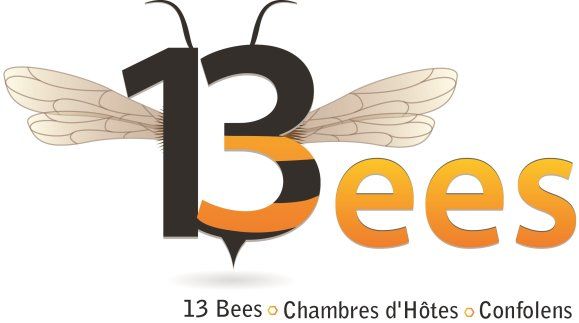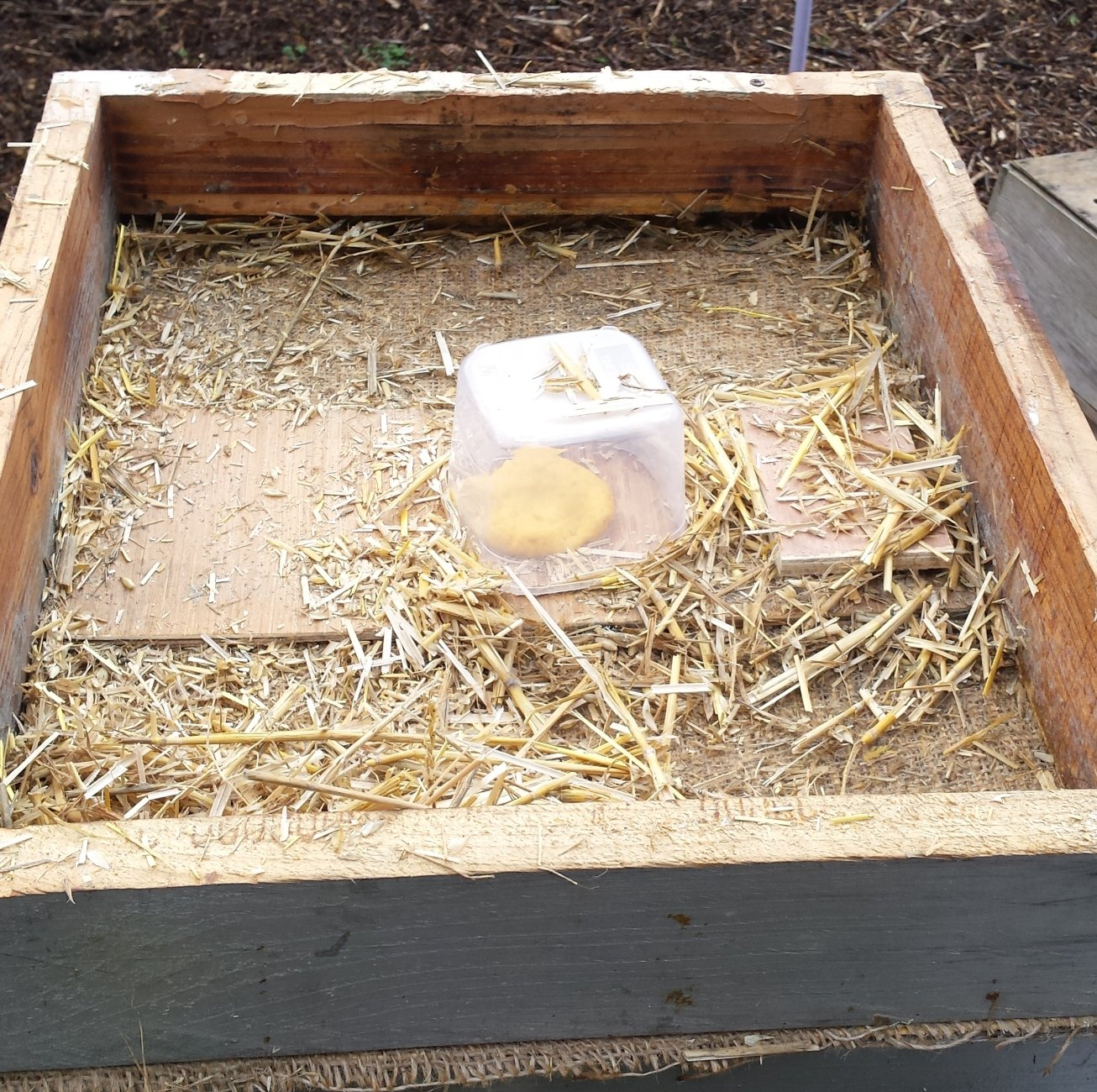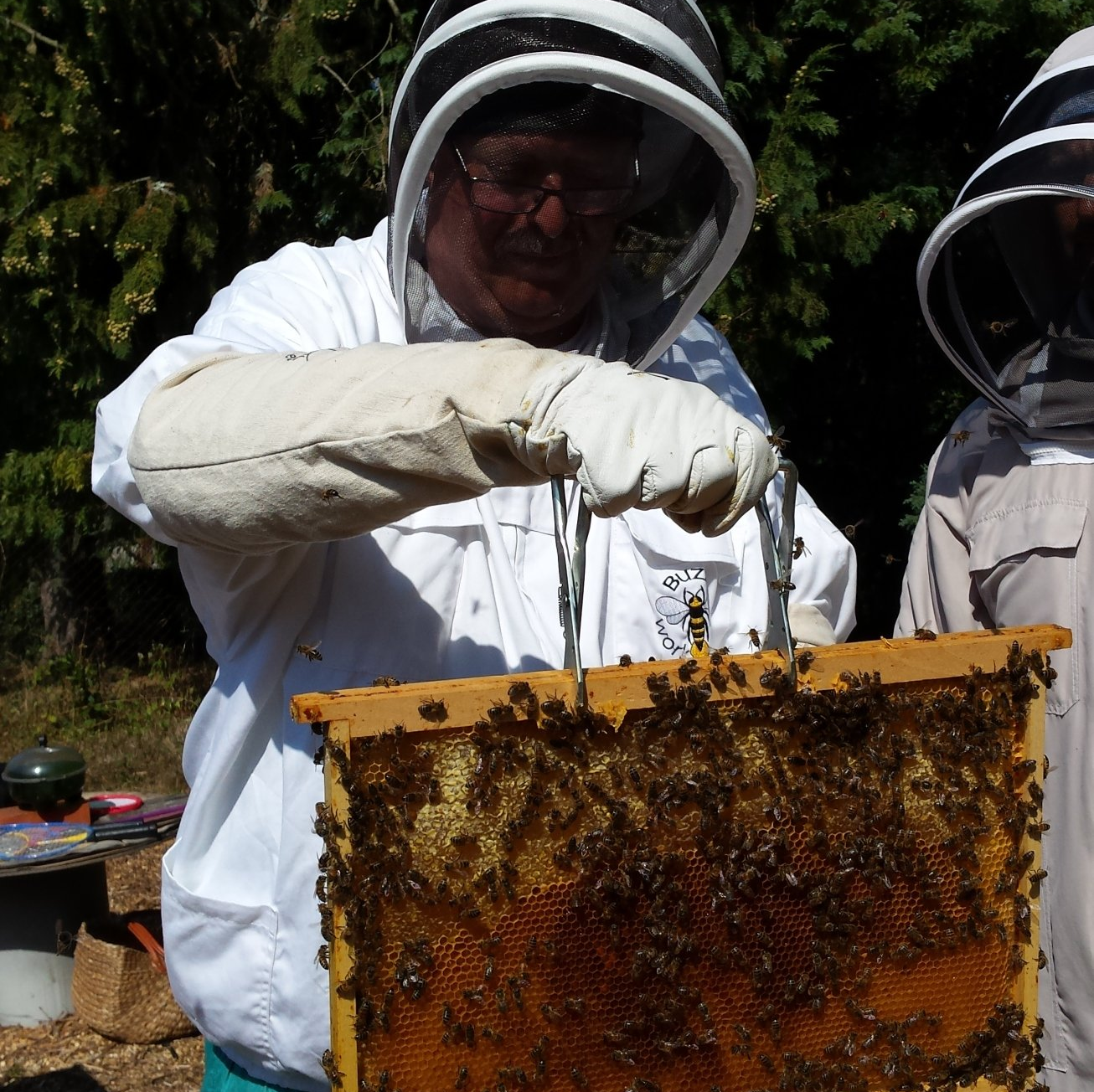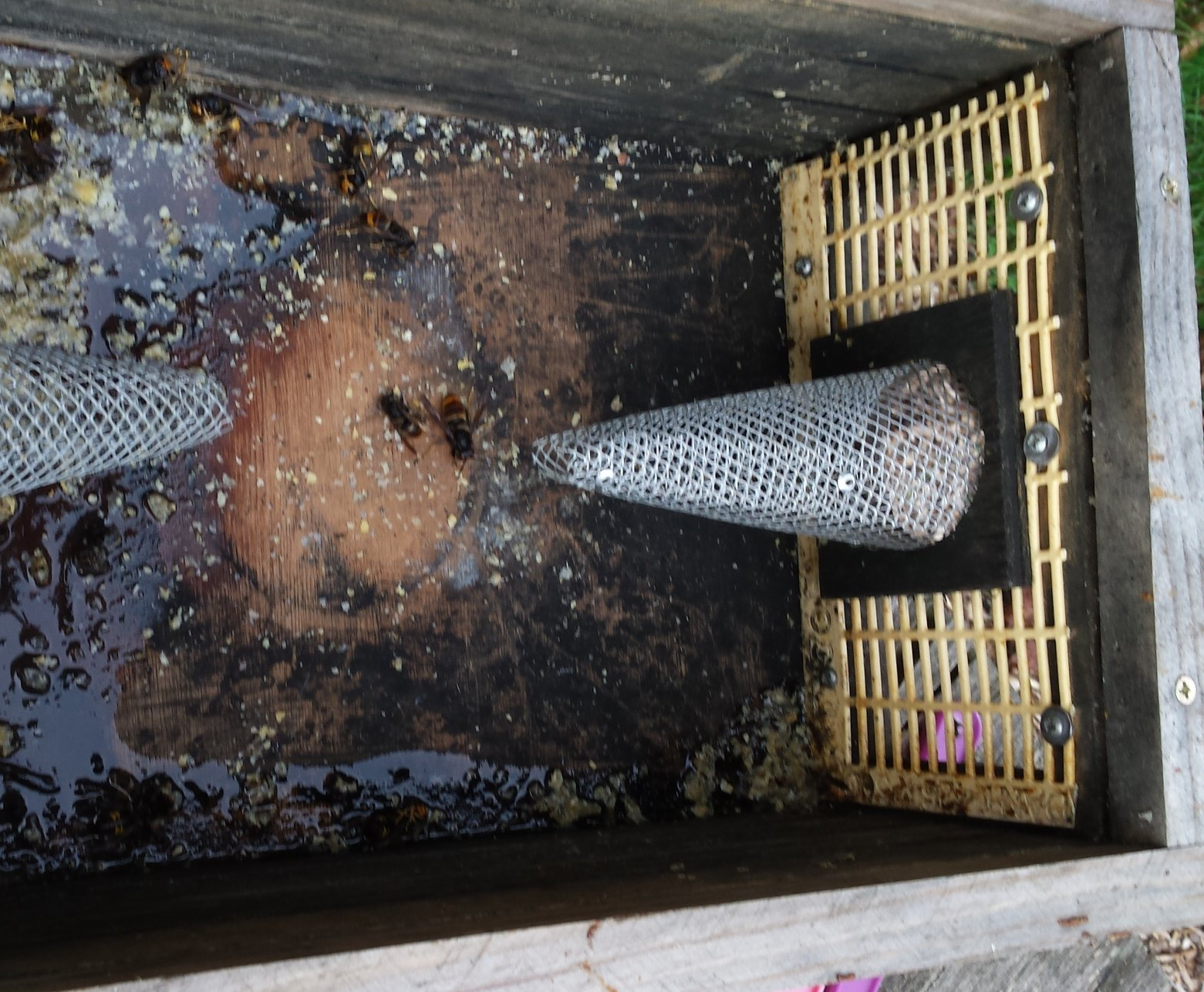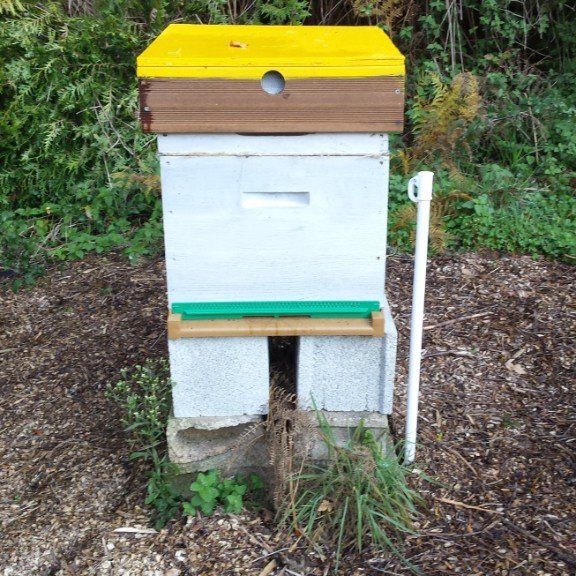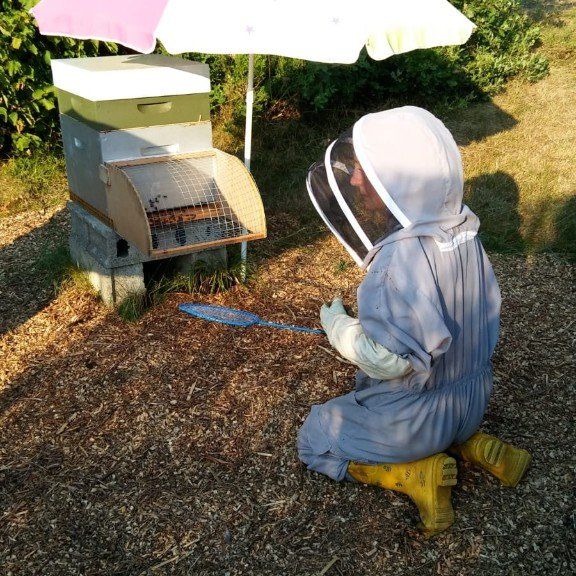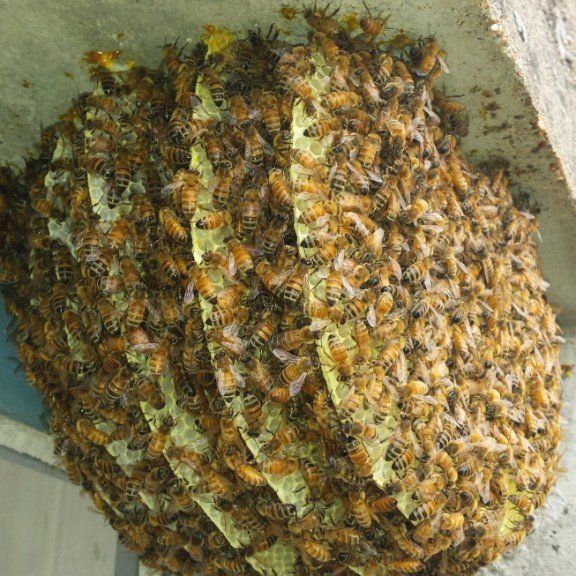Hateful Hornets
Protecting our bees
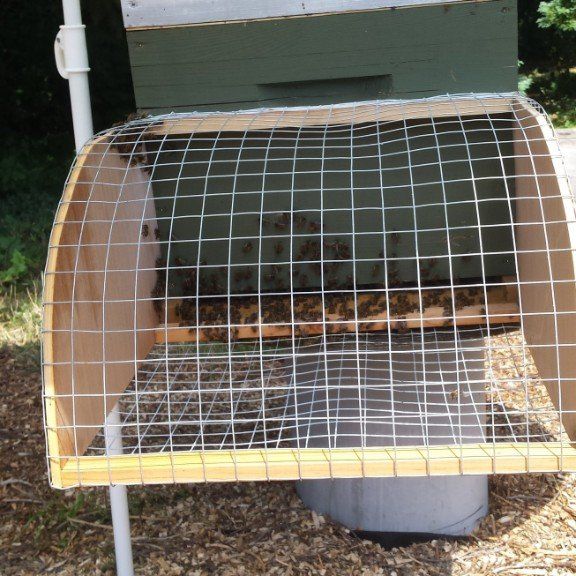
One of the most immediate threats to our bees is the Asian hornet, vespa velutina,
which first came to France in 2004 and has since spread across most of the country, wreaking havoc amongst apiaries. A single hornet can devour 50 honeybees in a day, so a nest of several thousand hornets will make short work of any bee colony. They are a real nuisance and every year I practise my backhand by whacking as many of them as I can with a badminton racquet.
However, clearly that isn't the answer, so I also put up traps and try and spot the hornets' nests. Beekeepers are an inventive lot, though, and so various ideas are being tried out. The latest is the hive muzzle and our local Bee Club recently organised a workshop session for members to make these, a sort of bread-bin shaped cage which fits over the front of the hive. The mesh is deliberately the size it is so that bees can easily fly through it but hornets would rather not. (They shy away from anything smaller than their wing span). The idea is that the bees have a safe space in which to decelerate as they approach the hive entrance; typically this space is where the hornets catch their prey, by hovering in front of the hive and pouncing on bees as they slow down.
We fitted two hives with muzzles and watched carefully to see what effect they would have. Of course, the ungrateful bees were not happy with our interference even though we insisted it was for their own good. Soon enough we noticed them flying out and away through the mesh; not that bothered after all, then?! So far so good...but wait a minute, what was this? Returning bees, instead of flying at full speed and slowing down once inside the 'safe' area, approached the hive from underneath
the muzzle, slowing down to land on the wire and then walk into the hive. Err, girls, that's not what you're supposed to do....sure enough, clever, ever-adapting Evil Hornet spotted this and changed position. Instead of hovering in front of the hive, the hornets moved to underneath the muzzle, just where the bees were gathering. We have to doff our imaginary caps to the hornets; they are able to quickly adapt to a new situation, keeping us on our toes and wondering what on earth to do next.
We've taken the muzzle off one of the hives so that we can compare it to the one with the muzzle - does having a muzzle make it easier or more difficult for the hornets to grab the bees, or is there no difference? The jury is still out, but we now have three methods of dealing with the threat - the muzzles, the traps and my badminton racquet!


